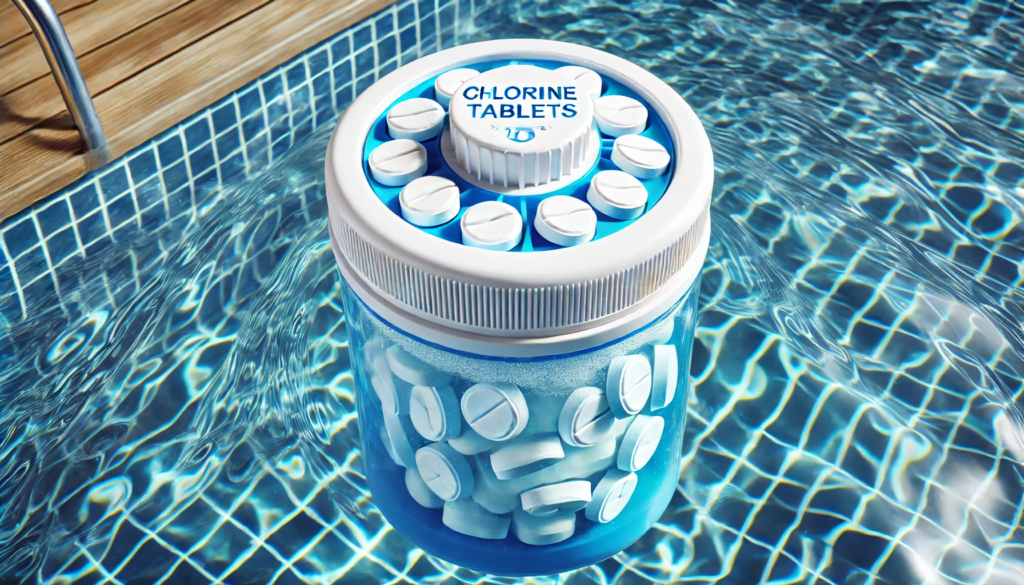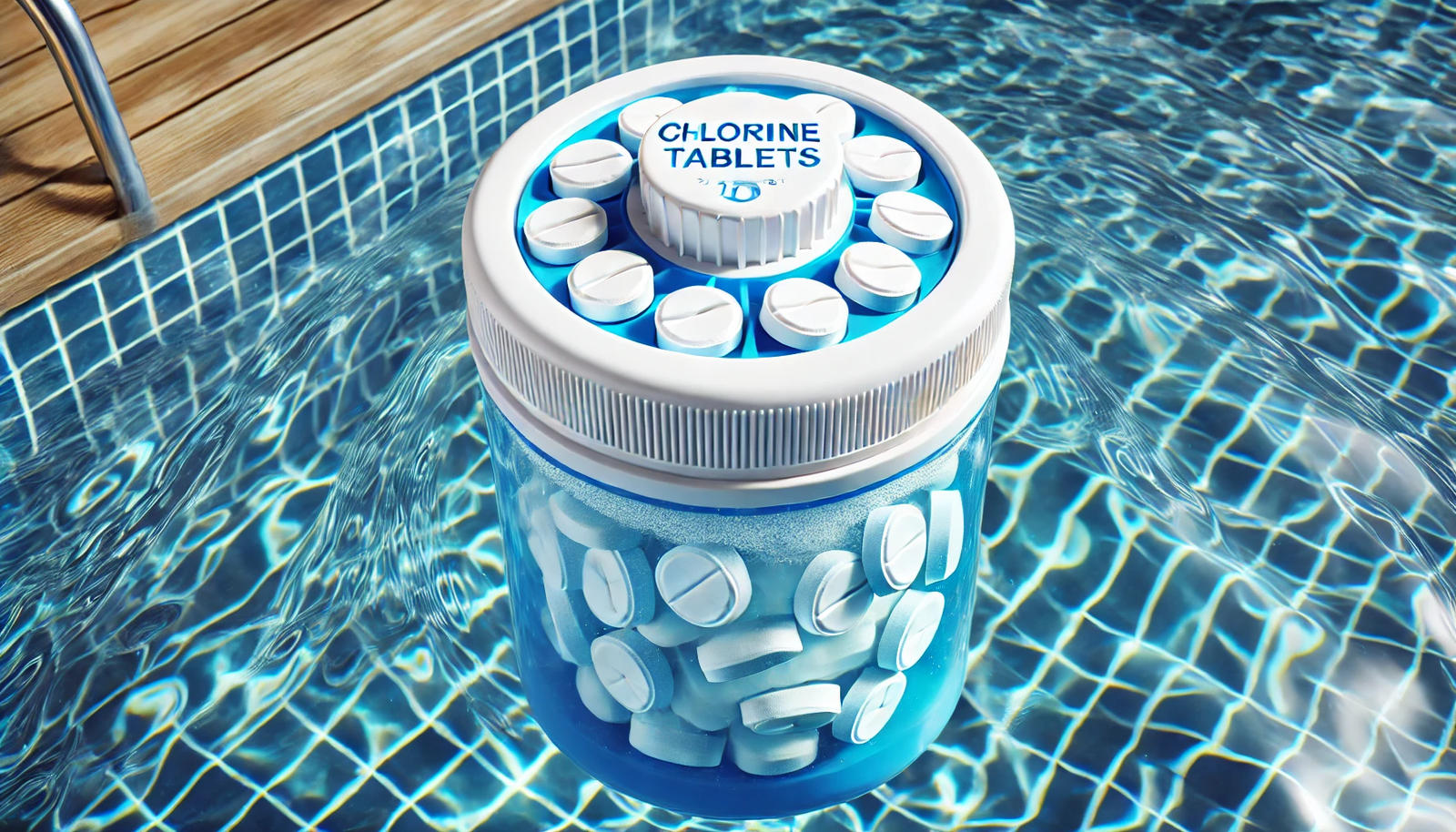When it comes to keeping your pool clean and safe, chlorine tablets are one of the most popular solutions. They are convenient, easy to use, and highly effective at killing bacteria and preventing algae growth in swimming pools. However, if you’re new to pool care or wondering about safety, you may have asked yourself: Can I swim with chlorine tablets in the pool? In this blog, we’ll discuss the function of chlorine tablets, their effects on pool water, and whether it’s safe to swim immediately after adding them to your pool.

The Impact of Chlorine Tablets on Pool Water
Before discussing whether you can swim with chlorine tablets in the pool, it’s important to understand their effect on the water. When added to the pool, chlorine tablets dissolve and release chlorine into the water. Chlorine acts as a disinfectant and oxidizer, which helps in:
Eliminating bacteria and viruses: Chlorine kills harmful microorganisms in the water, which could otherwise cause illness or infection.
Preventing algae growth: The chlorine keeps algae in check, ensuring the pool water remains clear and free from green, slippery growth.
Breaking down contaminants: Chlorine also helps break down organic contaminants like sweat, oils, and debris, keeping the water fresh and clean.
However, while chlorine tablets help maintain water quality, they also affect the chlorine level in the water, which is an important factor when deciding whether it’s safe to swim.
Can I Swim with Chlorine Tablets in the Pool?
Now, let’s address the question: Can I swim with chlorine tablets in the pool? The short answer is yes, you can swim in a pool that contains chlorine tablets, but there are important considerations to keep in mind:
1. Wait Until the Tablets Have Dissolved
After adding chlorine tablets to your pool, it’s important to allow time for them to dissolve completely. If you swim in the pool immediately after adding the tablets, you may come into contact with concentrated chlorine, which can irritate your skin, eyes, and respiratory system. High levels of chlorine directly from the tablets can cause chemical burns or other reactions.
To avoid this, it’s recommended to wait until the chlorine tablets have dissolved fully. This can take anywhere from a few hours to a day, depending on the size of the tablets and the circulation of the water. If you’re unsure, it’s always best to test the water’s chlorine levels before swimming.
2. Check the Chlorine Levels
Properly balanced chlorine levels are key to pool safety. The ideal range for free chlorine levels in a pool is between 1 and 3 parts per million (ppm). If the chlorine level is too high, the water can become harsh and unsafe to swim in. On the other hand, if the level is too low, the pool won’t be adequately sanitized.
After placing chlorine tablets in the pool, check the chlorine level using a pool test kit or test strips. If the chlorine level is above 3 ppm, it’s advisable to wait until the levels drop to a safer range before swimming. This can be done by letting the pool water sit for a while, or you can add a chlorine neutralizer to lower the levels more quickly.
3. Avoid Direct Contact with Tablets
While chlorine tablets are effective at sanitizing the pool, direct contact with them can be harmful. Never place chlorine tablets directly in the pool without using a floating dispenser or skimmer basket. If the tablets dissolve too quickly in one spot, they can bleach or damage the pool surface. It’s always best to let the tablets dissolve evenly through proper distribution methods.
4. Watch for Chemical Irritation
If you’ve recently added chlorine tablets to your pool and plan to swim soon after, be mindful of any skin or eye irritation. While it’s generally safe to swim once the chlorine has dissolved and levels are balanced, swimming in water with high chlorine levels can lead to red eyes, dry skin, or itching. Always shower before swimming to reduce the amount of contaminants introduced into the pool, which can interact with the chlorine.
Cheap Chlorine Tablets: Are They Safe?
While purchasing cheap chlorine tablets can save you money, it’s important to ensure that they’re still effective and safe for use. Low-cost tablets may contain impurities or inconsistent chlorine concentrations, which can affect the overall performance of the tablets. They might not dissolve as evenly or as slowly as higher-quality tablets, which can lead to fluctuations in chlorine levels and may increase the risk of skin irritation or other issues.
To ensure you’re using a safe and effective product, look for pool chlorine tablets factory manufacturers with a good reputation. Always buy from trusted suppliers that provide clear instructions for use and quality assurance.
Conclusion
In conclusion, while you can swim with chlorine tablets in the pool, it’s important to ensure that the chlorine levels are within a safe range and that the tablets have fully dissolved. Swimming too soon after adding chlorine tablets can lead to irritation or injury due to concentrated chlorine levels. Always wait for the tablets to dissolve, check the chlorine levels, and test the water before taking a dip.
If you’re concerned about maintaining proper chlorine levels in your pool, consider purchasing high-quality cheap chlorine tablets and reliable products from a reputable pool chlorine tablets factory to ensure the safety and cleanliness of your pool. By understanding how chlorine tablets work and following proper pool care guidelines, you can enjoy a safe, clean swimming environment all season long.

